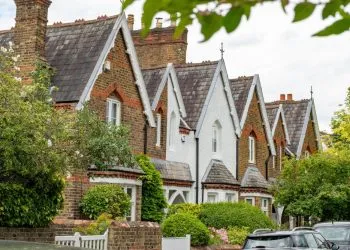Check out our quick guide to the main housing and mortgage pledges made by each political party in the run up to the general election on 4 July
 With the general election polling day looming ever closer the voting public must make up its mind over who it thinks should run the country.
With the general election polling day looming ever closer the voting public must make up its mind over who it thinks should run the country.
Housing, including mortgages, have been a key issue in the parties’ election campaigns following some tumultuous years for homeowners.
Many would-be buyers feel, quite rightly, they are priced out of the housing market due to high house prices, soaring mortgage rates and affordability challenges.
But those people who have secured mortgages have also been stung by high interest rates which have mean repayments have become unmanageable in many households, particularly in the cost-of-living crisis.
Housing, it is fair to say, really matters to voters.
In 2020, according to the Resolution Foundation, 11% of the population identified housing as one of the top three concerns the country faced. But in the run up to this election, that figure has more than doubled to 23%.
So, what has each party come up with for homeowners and first-time buyers? Do the Tories or Labour have more realistic and practical solutions to the housing crisis? Or do one of the other parties offer a better way forward?
Although that is for you to decide, we have quick at-a-glance guide to of each party’s housing manifestos so you can see what they are offering.
Conservatives

Stamp duty – make permanent the stamp duty break for first-time buyers which applies up to £425,000.
Help to Buy – revival of the scheme which enables first-time buyers to purchase a new build property with a 5% deposit using an equity loan from the government.
Mortgage Guarantee Scheme – the Tories have pledged to continue with the scheme which, through government backing, makes it less risky for lenders to provide small-deposit mortgages to first-time buyers
Housing – build £1.6 million homes across England in the next parliamentary term. (To achieve this target the Resolution Foundation said 300,000 homes would need to built every year for the next five years).
Capital Gains Tax – this is one for the landlords and property investors. Tories will bring in tax relief if landlords sell their property to existing tenants.
Leasehold – they will continue with the leasehold reform process, cap ground rents at £250 then reduce them to peppercorn over time.
Labour

Stamp duty – increase stamp duty by 1% on purchases of residential property by non-UK residents
Mortgage Guarantee Scheme – Labour plans to make permanent the scheme, which has been in place since 2021. Rebranded, Freedom to Buy, it will increase the availability of mortgages with small deposits of up to 5% for first-time buyers.
Housing – the party said it would build 1.5 million new homes over the next parliament, reform the planning system and take a ‘brown field first’ approach to building.
First-time buyers – will have the first chance to buy homes before international investors before houses are even built.
Leasehold – ban new leasehold flats and make commonhold the default and enact Law Commission proposals on enfranchisement, right to manage and commonhold.
Liberal Democrats

Rent to Own – a scheme for social housing to help people who cannot afford a deposit to own their own homes. In this model rent payments provide tenants with an increasing stake in the property and they can own it outright after 30 years.
Housing – Build 380,000 homes a year across the UK, including 150,000 social homes a year. This will be achieved by creating new garden cities and community-led development of cities and towns.
Mortgage rates – the manifesto says the party will ‘get mortgage rates under control through careful economic management’.
Leashold – abolish leasehold and cap ground rents at a ‘nominal fee’
SNP
Help to Buy ISA – SNP pledged to reintroduce a simplified scheme to help first-time buyers save for their first home.
Green Party
Housing – 150,000 new social homes every year
Retrofitting – Greens will introduce a programme to retrofit homes. This will provide insulation, clean heat and start and adaptations for more extreme climate conditions.
Reform
Stamp duty – new rates will be applied as follows: 0% on properties under £750,000, 2% on those at £750k to £1.5m and 4% on homes over £1.5m.














